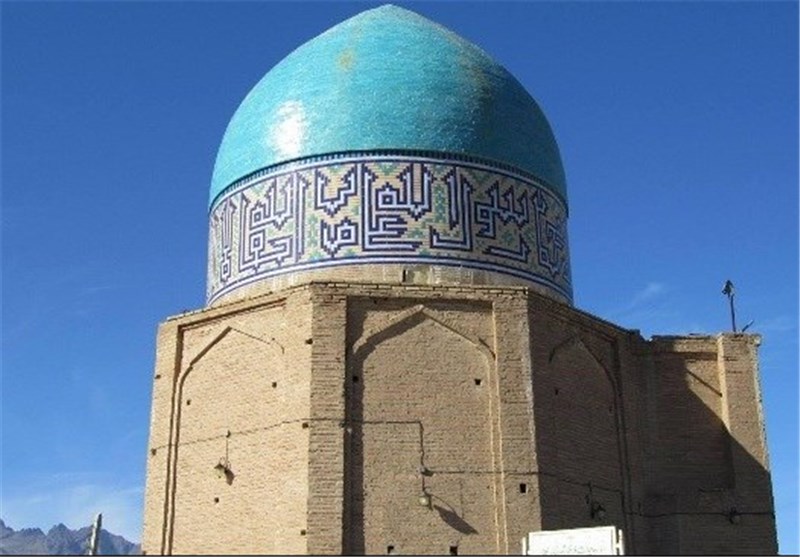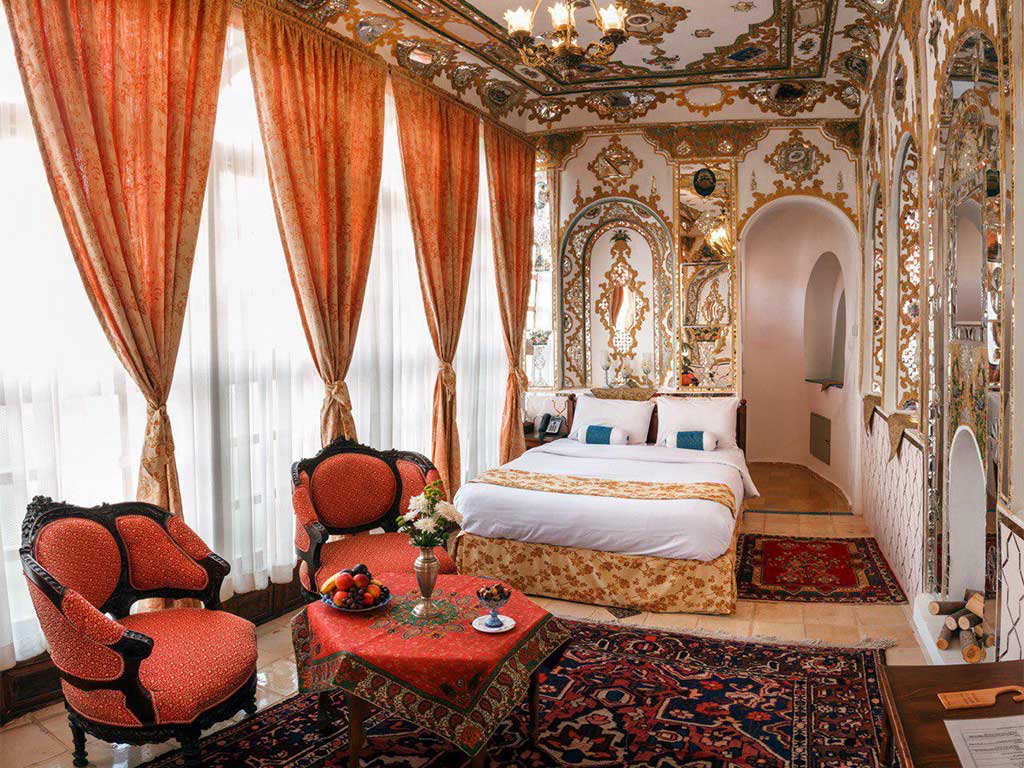محله افوشته نطنز
در سمت جنوب شرق شهرستان نطنز، محلهای زیبا به نام افوشته وجود دارد که دارای اثر تاریخی منحصر به فرد، متعلق به دورههای مختلف تاریخی در کنار هم میباشد، که باعث خلق شگفتی در دنیای تاریخ شده است. این محله در فاصله 1.5 کیلومتری از هتل قصرجهان نطنز واقع شده است.
افوشته بخش حاکم نشین نطنز در روزگاران گذشته بوده است. این محله خود دارای پنج محله می باشد: محله بالا، محله باغباد، محله سادات ( میرسید) ، محله دیزآب و محله پایین.
در این مقاله چند مورد از آثار تاریخی افوشته را معرفی می کنیم.
خانه سورگاه
خانه سورگاه محله افوشته نطنز، بر روی تپه ای مشرف بر حسینیه افوشته قرار دارد .این خانه در دوره تیموری ساخته شده است و از نظر موقعیت جغرافیایی از شمال و شرق به حسینیه افوشته، از جنوب به آب انبار افوشته و از غرب به باغات سرسبز این محله منتهی می شود.
این بنا بر روی بستر سنگی بزرگ ساخته شده است که نشان دهنده استحکام و قدمت تاریخی این بنا می باشد. خانه سورگاه مکانی برای پذیرائی از میهمانان سید حسن واقف بوده است، همچنین زمانی که او، شروع به تبلیغ مذهب تشیع کرد، از این مکان به عنوان تجمع و مکانی برای مشورت با دیگران استفاده می کرد.

مقبره سید حسن واقف
آرامگاه سید حسن الحسینی مشهور به سید
واقف برجی مرتفع میباشد که بر روی تپهای در محله افوشته قرار گرفته است.
ساخت این بقعه به قرن پانزدهم میلادی برمیگردد. سید واقف در جوانی، یعنی در سن ۴۲
سالگی این بقعه را برای خود بنا کرد.
گنبد این بقعه برجی هشت ضلعی آجری و
فاقد تزئینات کاشیکاری و گچبری میباشد، طول هر یک از اضلاع خارجی آن در حدود
3.57 متر و هر ضلع آن دارای طاقنمای جناقی تزئینی است که عرض طاقنما 2.25 متر میباشد.
گنبد بقعه دارای ایوانی به ابعاد 2.5 در 3 متر همراه با طاق رومی نسبتا مرتفعبه
بلندی 7 هفت متر میباشد.
دیوارهای ایوان نیز در طرفین دارای دو طاقنمای تزئینی هستند که طاقنمای پایینی
عرض 83 سانتیمتر و طاقنمای بالایی در حدود یک متر بالاتر قرار گرفته است.

برای آشنایی با همه آثار تاریخی افوشته به مقاله محله تاریخی افوشته نطنز مراجعه کنید.
روستای تاریخی ابیانه
در ۴۰ کیلومتری شمال غربی نطنز از استان اصفهان در دامنه کوه کرکس روستایی کهن و دیدنی به نام ابیانه واقع شده است. روستای ابیانه به دلیل آثار و بناهای تاریخی پرتنوعش از استثنایی ترین روستاهای ایران به شمار آورد. شکوه معماری بومی و سرشار از زیبایی روستای ابیانه، آن را در شمار نمونه های کم نظیرو از اماکن دیدنی استان اصفهان و شهر نطنز درآورده است.
روستای ابیانه روستایی با منظره ای زیبا و خوش آب و هوا و دارای موقعیت طبیعی مساعدی است. در دوره صفویه هنگامی که شاهان صفوی برای ییلاق به نطنز میرفتند بسیاری از نزدیکان آنها و درباریان ترجیح میدادند در ابیانه اقامت داشته باشند.
خانه های این روستا همگی بر روی دامنه ای در شمال رودخانه برزرود بنا شده اند به طوری که پشت بام مسطح خانه های پایین دست، حیاط خانه های بالادست را به وجود آورده اند و هیچ دیواری آنها را محصور نمیسازد. روستای ابیانه روستایی چند طبقه به نظر میآید که در بعضی موارد تا چهار طبقه آن را می توان مشاهده کرد.

جاذبههای ابیانه
روستای ابیانه مانند بسیاری از نقاط دیگر در استان اصفهان، بهعنوان اثری تاریخی بهحساب میآید. تماشای کوچهها و دالانهای جذاب شهر هرفردی را با هرسلیقهای به وجد میآورد. آتشکده، مساجد و زیارتگاههای ابیانه برای افرادی علاقمند به آثار تاریخی فرصتی بینظیر برای غرقشدن در دنیای تماشا میباشد. قلعه، آبانبار و حمام روستا هم کنار چشمههای زیبا باعث میشود مسافران به فکر اقامت چندروزه باشند تا بتوانند با دقت بیشتری به هرکدام سر بزنند. البته این موضوع نگرانی ندارد؛ زیرا با اقامت در هتل قصرجهان نطنز می توانید با خیالی آسوده از این روستا دیدن کنید.
منبع : هتل قصرجهان
Isfahan traditional hotel
The historical house of Ghasremonshi is located in Ghasremonshi neighborhood (Hassan abad gate). In the pre-Islamic period, this neighborhood was within the city limits and the gate of the southeast of the city, and in the Islamic era, the city of Isfahan was created following the connection of this group of villages. This building is registered in the list of national monuments and in 1394 it was completely renovated. This building belongs to the late Safavid and Qajar periods
Ghasremonshi Hotel is a hotel with traditional design and structure and has been built and renovated by Chal Bagh method. The main mansion belongs to the Safavid period and includes a royal residence and several rooms, including a mirror and Safavid room. They are often fluent in English and most of their hotel guests are foreigners.
The hotel restaurant is in a beautiful environment with traditional architecture and colorful windows, as well as serving a variety of Persian food, soup and traditional Isfahan food such as Amaj soup is ready to receive hotel guests. The hotel café is also located in the open air and in the beautiful grounds of the hotel. In this cafe you can drink a variety of Guava drinks and traditional syrups.
In addition, if you want to eat in your room, you can use the room service (order food and drinks from inside the room).
Facilities on offer at the traditional Qasr Munshi Hotel include an exchange office, a craft shop, an open-air car park with limited capacity and laundry services.
It should be noted that children under the age of six are not allowed in this hotel.

Source: ghasrmonshihotel
History of mirror work
One of the decorations that has been widely used in the beauty of buildings from the past is mirror work. When small pieces of mirrors come in different geometric shapes and models, such as different bushes, and these mirrors are used on the walls, ceilings, columns, etc. of different buildings, giving that place a beautiful effect. And it gives shine.
The reflection of light in these small mirrors and its radiation causes a special glow and beauty. In terms of strength, this type of decoration is very durable and lasts for many years. If you have been to different historical places and mirrors have been used in those places, you will notice the special effect and high durability of these mirrors.
The art of mirror work is one of the branches of decorative arts in Iran and if we want to study and analyze the history of this art, we must go back to the Sassanid period. During this period of Iranian history, the first and most beautiful mirror works became popular and were mostly used in the palaces and buildings of Persian kings.
One of the prominent mirror works of the ancient history of Iran is the building of the court of Shah Tahmasb Safavid in the year (930-984 AH / or 1524-1576 AD). This beautiful building and a prominent example of mirror art is located in the city of Qazvin. Also, the mirror room of Qasrmanshi Palace in Isfahan is another example of mirror work left from the Qajar period.
Source: ghasrmonshihotel
Art in the Safavid era
One of the brightest periods of Iranian art after Islam is the Safavid period. In 907 AH (1502 AD), at the beginning of the establishment of this dynasty, Tabriz was the capital and therefore this city is the center for the activities of artists such as calligraphers, and this makes Let there be artists in painting and refinement as well as artists who work in other arts and crafts and there are artists who are in the home of textiles and textiles. The job was found, turned.
At the end of the tenth lunar century, during the reign of Shah Abbas, the capital of the country was moved to Isfahan. With the choice of the new capital, he found this city as another city of the eastern cities.
Markets, palaces, mosques, gardens, bridges were included in the city map. At this time, all religious buildings were decorated with tile decorations. The buildings of Sheikh Lotfollah Mosque, Sar in Qaisaria and Imam Mosque in Naghsh Jahan Square were decorated with tiles of knowledge. Square-painted patterned bricks, known as "seven-color" bricks, were widely used in construction. The pattern of the tiles and their colors are a special decoration of the buildings of this period.
Not only the walls, but also the domes, porches, arches, entrances and minarets were decorated with tiles and mosaics.
The construction of large entrances with transparent tiles and bedding was very advanced in the age of plates. The combination of Sardar Bozorg and their minaret on its side with the courtyard of four porches and the buildings around it and the dome contract in such a way that it fits all the buildings, has reached a low level in the architecture of the time.
Due to the security of Iran in this period, large and excellent buildings such as the magnificent palaces of Qapo, Chehel Soton, Hasht Behesht and Ashraf Hall have been built in Isfahan.
The walls of these palaces are covered with water-colored and colorful tiles, and between all of them, there is a connection with the designs of famous painters of that period. Ceilings and walls are also often decorated with inlays.
Wooden decorations played a major role in non-religious buildings, causing destruction and lacquer paintings to be used.
Their designs were closely related to miniature art. Carving and carpentry, especially in the doors and ceilings, there was a special art in this period. Murals (frescoes) have been used in Aligapo Palace, Ashraf Palace and Chehelston, as well as mirror work as a new type of decoration in buildings, such as the house mirror.
In general, a tenth and eleventh lunar century, as the heyday of Islamic art in Iran and Isfahan has been one of the most important and beautiful cities of this period. The big buildings of the city are decorated with beautiful tiles.
The palace of the secretary is another building built in the late Safavid period. It was renovated in 2005 and turned into a hotel.

The great art of Iran is not limited to the pre-Islamic era
With a general view of the arts of this period, it must be admitted that in the Safavid period, a new and brilliant era in Iranian art arose once again.
The great art of Iran, as some have mistakenly thought, is not limited to the pre-Islamic period, but in each period, art that was beautiful and complete in its kind has emerged.
In the tenth lunar century, Iranian artists achieved new advantages and results, in that period carpets were woven that were unprecedented to date.
It is said that Shah Abbas Safavid was interested in collecting hard pottery and ordered to build special rooms for this purpose in Aali Qapavi, Isfahan, and the tomb of Sheikh Safi al-Din in Ardabil, and to prepare places on the wall for storing pottery.
Source: ghasrmonshihotel